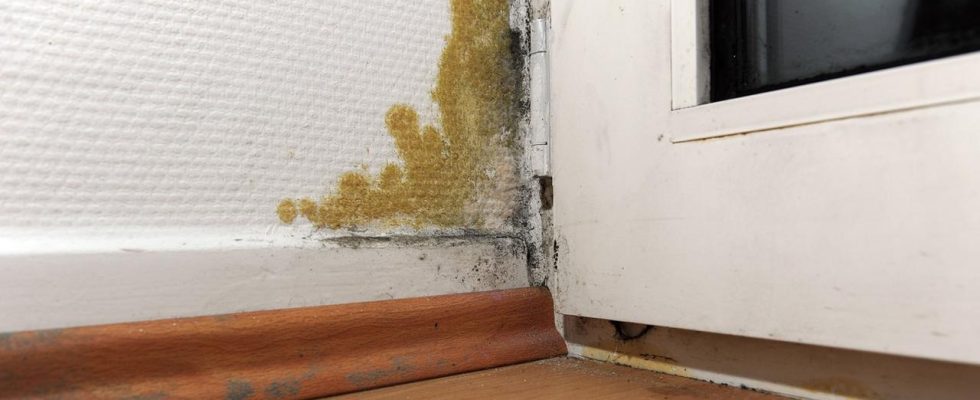Mold is a big problem for many renters and homeowners – especially in winter. Proper ventilation, heating and sensible insulation can help.
It not only looks ugly, but is also extremely harmful to health: mold in living spaces. It is often an uninvited guest, especially in winter, because then the climate in apartments and houses is often too cold and too humid – ideal conditions for mold growth.
There are around 400 species of microscopic fungi. In order to feel really comfortable, they need a humidity level of 80 percent in front of the wall for longer. The effects do not appear immediately, but take some time. “At first there is no sign of the infestation, but after about 14 days you can see the discoloration,” says Werner Ehl from St. Wendel in Saarland. He has been an expert for moisture and mold damage and an energy consultant for the consumer advice center for many years.
Ventilate – but do it right
In his opinion, the best way to keep humidity low is to ventilate. There are different approaches. Exactly how you take action is secondary – the main thing is that you do it. Shock ventilation is often considered the most effective method. This involves completely opening the windows – preferably opposite windows – several times a day. In winter, five to ten minutes are sufficient.
Ventilating through tilted windows is considered less efficient. But here too there are applications in which a tilted window has its advantages. The Thuringia Consumer Center points out that this method is particularly suitable for getting rid of moisture that occurs when showering or cooking. By the way: Drying laundry in living rooms also creates humid air in the room – ventilation is particularly important in this case too.
Not heating neglect
In addition to ventilation, correct heating is an important prerequisite for preventing unwanted mold from gaining access. According to the Federal Ministry of Consumer Protection, it is important that all rooms in the household are adequately heated in winter. The temperature in living rooms should be at least 17 degrees; in the hallways, 15 degrees is sufficient.
The consumer advice center also emphasizes that it is important not to let rooms cool down. It is important to ensure that the windows are closed again after ventilation in the cold season and the rooms are heated again.
Insulation helps in most cases
But something else can also help to keep unwanted mold away: insulation. Because external insulation keeps the heat in the rooms, these are not good living conditions for the fungi. For appraiser and energy consultant Ehl, properly installed internal insulation is also an advantage. But be careful: If this is not done correctly, it could even encourage mold. Although it keeps the heat in the apartment, the outside wall stays cool, explains Ehl.
According to Ehl, the fear of many homeowners that the houses are too tight due to good insulation and that this leads to mold problems is, according to Ehl, unfounded. In fact, the reverse is true, with leaks in the building shell posing a problem.
Ultimately, according to Ehl, good thermal insulation has another very positive effect in addition to reducing mold growth – namely for your wallet. The heating costs can be significantly reduced.

